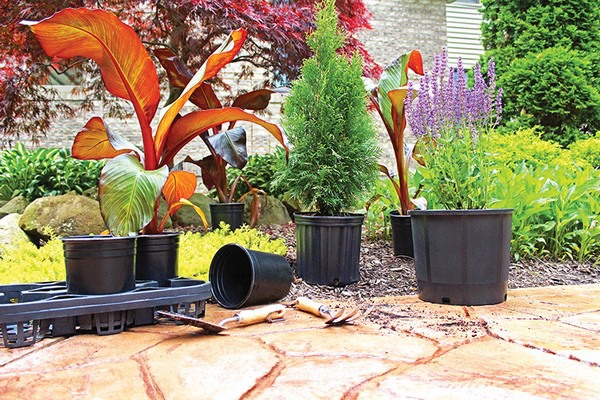Nursery containers are an essential tool for gardeners and landscapers alike. They provide a controlled environment for young plants to establish their root systems before being transplanted into their final growing locations. The HC Companies team investigated some commonly asked questions by those getting started in the horticulture industry. Let’s delve into the various sizes of nursery containers, discuss when and how to transplant nursery plants, and provide tips on keeping them stable.

What is a #1 Nursery Container?
A #1 nursery container, also known as a one-gallon nursery container, is a standard-sized pot used for starting plants from seeds or cuttings. These containers typically measure approximately 6-7 inches in diameter and 6-8 inches in height. They are ideal for growing smaller plants, such as annuals, herbs, and small perennials, during their initial stages of growth.
How Big is a #2 Nursery Container?
A #2 nursery container, or a two-gallon nursery container, is larger than a #1 container. These pots generally have a diameter of 8-10 inches and a height of 8-10 inches as well. The increased size provides more space for the roots to develop, making them suitable for growing medium-sized plants like shrubs, perennials, and small trees.
What Size is a 3 Gallon Nursery Container?
A 3-gallon nursery container is typically around 10-12 inches in diameter and 10-12 inches in height. These containers are larger still and are commonly used for growing larger plants, including small to medium-sized trees and shrubs. The extra volume allows plants to establish a more extensive root system before transplanting.
